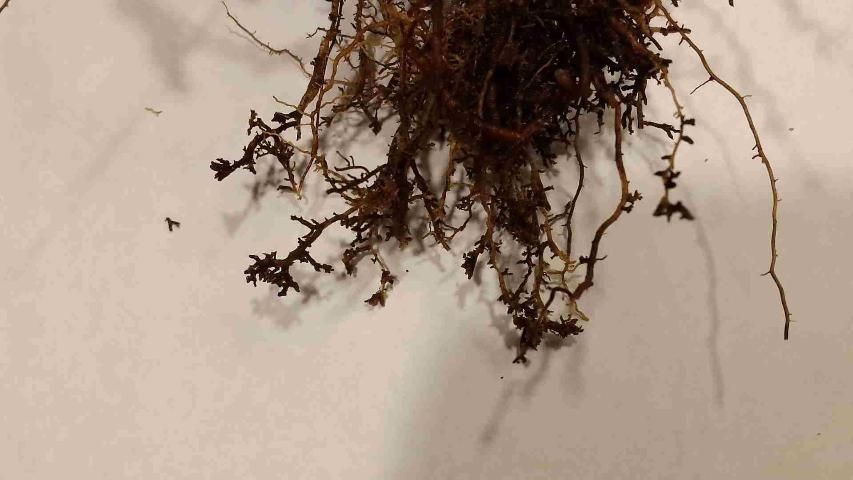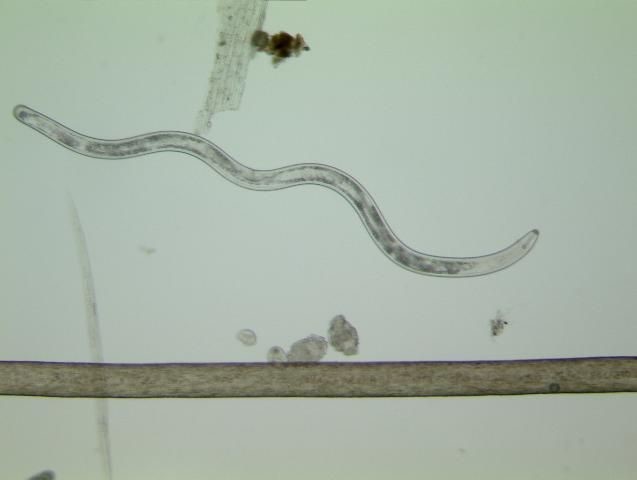by LUIS RODRIGUEZ, UF/IFAS Extension Polk County
Many things can be considered pests. Some of these pests include arthropods (insects and mites), weeds, mammals like birds or wild hogs, plant diseases, and nematodes. This last one could be overlooked because we cannot see them without a microscope.
What Are Nematodes?
Nematodes are microscopic roundworms that live in the soil or plant tissue. The majority of nematode species are of ecological importance, meaning they have a role to play that benefits the environment. Unfortunately, some species are parasitic and can negatively affect plants. Parasitic nematodes that feed on plants and have a stylet (mouth-spear) that functions like a needle. Some are ectoparasites (stings the plant) and remain in the soil and others are endoparasites (injure the plant) either migratory or sedentary. Parasitic nematodes that can cause damage to citrus plants in particular include the Citrus Nematode (Tylenchulus semipenetrans), the Burrowing Nematode (Radopholus similis), the Sting Nematode (Belonolaimus longicaudatus); and the Dagger Nematode (Xiphinema vulgare).
What Damage Can They Cause?
Since nematodes are microscopic, some producers may have them present in their operations without knowing. Depending on the species, nematodes can cause different types of damage.
- Foliar nematodes
Foliar Nematodes are endoparasites that affect the part of the plant above the ground, often the leaves. They feed inside the leaves and buds of ferns, chrysanthemums, strawberries, and other plants. They can cause angular spots on the leaves part of the plant. These nematodes can distort or kill buds, distort leaves, and cause yellow to dark-brown lesions between major veins of the leaves.
- Root-knot nematodes
These are nematodes that affect the root system of plants. They inject hormones into the roots that cause knots or galls to form. They cause extensive physical and chemical changes in the plants that can make them more susceptible to fungal and bacterial disease.
- Nematodes that affect citrus plants
Nematodes that affect citrus trees do not often kill the plants. On the other hand, these nematodes can reduce the productivity, growth, and vigor of the plant. Plants that are being infested with nematodes grow slower and smaller. These symptoms of decline may increase with time, environmental stress such as drought, freezing temperatures, and when combined with other soilborne pests.

How Can You Control Nematodes?
17
- Identification
The first step in controlling nematodes will be to identify them. As mentioned before, some producers may not know if they have nematodes since they are microscopic. No management should be recommended before confirming the presence of nematodes. The only way to determine whether you have nematodes is by testing the soil or plant tissues (roots or leaves) that you suspect are being damaged by nematodes. Testing will confirm if you have the presence of nematodes and what species of nematodes you have. The UF/IFAS Nematode Assay Lab can help producers do this testing. For more information about this lab please scan the following QR code:
- Exclusion and Sanitation
Nematodes can be managed but are very unlikely to be eradicated once they are present in a location. One of the best solutions to avoid nematodes is to make sure you are not spreading nematodes into a new location before planting. Obtaining plants from certified nematode-free nurseries is a good practice for any producer to follow. Producers that need to add soil to their operation can buy nematode-free soil to prevent the introduction of nematodes into their agricultural operation. Cleaning your equipment is also important to avoid spreading nematodes and other diseases from different areas within an agricultural operation.
- Cultural Practices
Nematode management won’t be effective if your plants are in poor condition. Proper irrigation, fertilization, soil management, and water quality are important to maintain a plant’s health. Healthy plants are less susceptible to nematode damage. Some plant cultivars can be more resistant to nematodes and could be recommended to producers to minimize nematode problems.
- Soil Solarization
Soil solarization is a process where we use the heat of the sun to kill soilborne pests, including nematodes. This process is more effective during the summer when we have hot weather, and it consists of using a clear tarp and placing it with the corners buried in the location where you want to control the pest. The tarp should be placed for at least 4-6 weeks and should be removed only when you are ready for planting.
- Chemical Control
There are several pesticide products labeled for nematode control. However, depending on the agricultural commodity and location some treatments may be limited or restricted because of environmental concerns. Before buying a product, always read label instructions, and verify local laws and regulations. You can always call your local extension office for questions regarding chemical control of nematodes.
For more information about nematodes please access the following “Ask IFAS” publications:
2023–2024 FLORIDA CITRUS PRODUCTION GUIDE: NEMATODES
NEMATODE MANAGEMENT IN TOMATOES, PEPPERS, AND EGGPLANT
NEMATODE MANAGEMENT IN THE VEGETABLE GARDEN
Luis Rodriguez is the Polk County Small Farms and Pesticide Education Extension Agent. You can reach him at lrodriguezrosado@ufl.edu.

